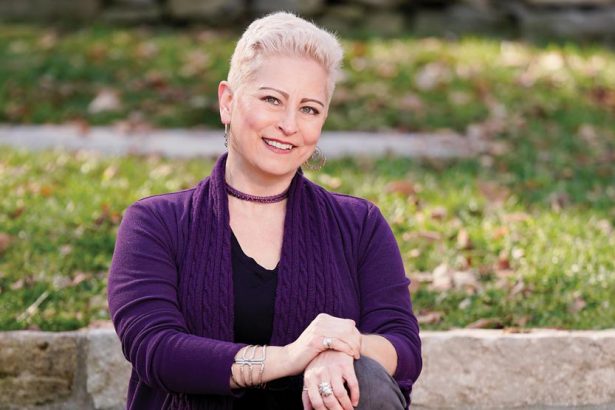Patient Search
 |
 |
|
KaCrole Higgins was diagnosed with breast cancer in 2020. “In May 2020, I found a lump in my breast. I cried. By June, it was diagnosed as breast cancer, triple positive, stage 1A. While getting this cancer diagnosis was devastating, it also became an opportunity. Suddenly, the cancer gave me clarity. It gave me clarity about what was important, what was good in my life, what was toxic in my life, and what I needed to do.” Click below to read more of KaCrole’s story |
If Landon Ryan had been diagnosed with bilateral retinoblastoma 10, 20 or 30 years ago, she might not be here today with nearly perfect vision.Thanks to recent improvements in the treatment for this rare form of cancer that almost exclusively affects children under the age of 5, the diagnosis had the power to change Landon’s life when she was 11 months old, but not to take it — or her eyesight. Click below to learn more about Landon and her story. https://momentum.vicc.org/2022/04/brighter-outlook/ |
Mismatched Related Donor versus Matched Unrelated Donor Stem Cell Transplantation for Children, Adolescents, and Young Adults with Acute Leukemia or Myelodysplastic Syndrome
Multiple Cancer Types
This phase III trial compares hematopoietic (stem) cell transplantation (HCT) using mismatched related donors (haploidentical [haplo]) versus matched unrelated donors (MUD) in treating children, adolescents, and young adults with acute leukemia or myelodysplastic syndrome (MDS). HCT is considered standard of care treatment for patients with high-risk acute leukemia and MDS. In HCT, patients are given very high doses of chemotherapy or radiation therapy, which is intended to kill cancer cells that may be resistant to more standard doses of chemotherapy; unfortunately, this also destroys the normal cells in the bone marrow, including stem cells. After the treatment, patients must have a healthy supply of stem cells reintroduced or transplanted. The transplanted cells then reestablish the blood cell production process in the bone marrow. The healthy stem cells may come from the blood or bone marrow of a related or unrelated donor. If patients do not have a matched related donor, doctors do not know what the next best donor choice is or if a haplo related donor or MUD is better. This trial may help researchers understand whether a haplo related donor or a MUD HCT for children with acute leukemia or MDS is better or if there is no difference at all.
Leukemia,
Myelodysplastic Syndrome,
Pediatric Leukemia,
Pediatric Lymphoma,
Pediatrics
III
Kitko, Carrie
NCT05457556
COGASCT2031
Testing the Use of Steroids and Tyrosine Kinase Inhibitors with Blinatumomab or Chemotherapy for Newly Diagnosed BCR-ABL-Positive Acute Lymphoblastic Leukemia in Adults
Leukemia
Leukemia
This phase III trial compares the effect of usual treatment of chemotherapy and steroids and a tyrosine kinase inhibitor (TKI) to the same treatment plus blinatumomab. Blinatumomab is a Bi-specific T-Cell Engager (BiTE) that may interfere with the ability of cancer cells to grow and spread. The information gained from this study may help researchers determine if combination therapy with steroids, TKIs, and blinatumomab work better than the standard of care.
Leukemia
III
Mohan, Sanjay
NCT04530565
ECOGHEMEA9181
Studying the Effect of Levocarnitine in Protecting the Liver from Chemotherapy for Leukemia or Lymphoma
Multiple Cancer Types
This phase III trial compares the effect of adding levocarnitine to standard chemotherapy vs. standard chemotherapy alone in protecting the liver in patients with leukemia or lymphoma. Asparaginase is part of the standard of care chemotherapy for the treatment of acute lymphoblastic leukemia (ALL), lymphoblastic lymphoma (LL), and mixed phenotype acute leukemia (MPAL). However, in adolescent and young adults (AYA) ages 15-39 years, liver toxicity from asparaginase is common and often prevents delivery of planned chemotherapy, thereby potentially compromising outcomes. Some groups of people may also be at higher risk for liver damage due to the presence of fat in the liver even before starting chemotherapy. Patients who are of Japanese descent, Native Hawaiian, Hispanic or Latinx may be at greater risk for liver damage from chemotherapy for this reason. Carnitine is a naturally occurring nutrient that is part of a typical diet and is also made by the body. Carnitine is necessary for metabolism and its deficiency or absence is associated with liver and other organ damage. Levocarnitine is a drug used to provide extra carnitine. Laboratory and real-world usage of the dietary supplement levocarnitine suggests its potential to prevent or reduce liver toxicity from asparaginase. The overall goal of this study is to determine whether adding levocarnitine to standard of care chemotherapy will reduce the chance of developing severe liver damage from asparaginase chemotherapy in ALL, LL and/or MPAL patients.
Leukemia,
Pediatric Leukemia
III
Borinstein, Scott
NCT05602194
VICC-NTPED23475



